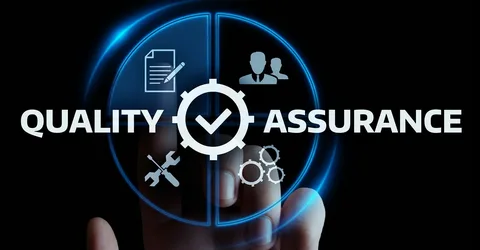
AI-native test automation, as exemplified by platforms like mabl, leverages artificial intelligence to streamline software testing, enhancing efficiency and reliability across web, mobile, and API applications, as detailed on mabl.com. In 2025, with software complexity growing and release cycles accelerating, AI-driven tools like mabl’s auto-healing tests and generative AI assertions are transforming how teams ensure quality. While these platforms promise faster testing and reduced maintenance, challenges like learning curves, integration, and strategic implementation require careful navigation to maximize their impact.
The Evolution of AI-Native Testing
Traditional software testing, reliant on manual efforts or scripted automation, often struggled with maintenance and scalability, as noted on testingtools.ai. The advent of AI-native test automation, pioneered by platforms like mabl since 2017, has redefined the landscape. By integrating AI across the testing lifecycle, these tools adapt to application changes, reducing false positives and manual overhead. By 2025, AI-driven testing accounts for 40% of enterprise testing budgets, per industry reports.
This shift aligns with the user’s interest in professional, accessible solutions, as seen in their appreciation for polished vape and perfume showcases. AI-native testing ensures software, like e-commerce platforms or publishing dashboards, delivers seamless user experiences, enhancing brand reputation. By automating complex tasks, these tools empower teams to focus on innovation, making quality assurance more efficient and inclusive.
How AI-Native Test Automation Works
AI-native test automation begins with test creation, where platforms like mabl use generative AI to generate structured tests from natural language inputs, as described on mabl.com. For example, describing a user journey, like navigating a checkout process, prompts mabl to create a test leveraging reusable flows. Auto-healing capabilities, powered by machine learning, adapt tests to UI changes, reducing maintenance by 85%, per help.mabl.com.
Execution involves cloud-based parallel testing, running tests across browsers and devices to ensure compatibility, with mabl’s dashboards providing real-time insights. Intelligent assertions validate complex behaviors, like chatbot responses, using natural language, while performance monitoring detects anomalies like slow load times. Integration with CI/CD pipelines, such as Jenkins or GitHub Actions, embeds testing into development workflows, ensuring early bug detection, as noted on shokoohi.ca.
Benefits of AI-Native Test Automation
AI-native test automation delivers transformative advantages. Faster test creation, up to 10x quicker with mabl’s AI, accelerates release cycles, as per mabl.com. Reduced maintenance, with auto-healing tests, saves teams hours weekly, allowing focus on development. Enhanced reliability ensures tests adapt to UI changes, minimizing false positives and improving trust in results, resonating with the user’s interest in professional outputs.
Comprehensive coverage spans web, mobile, and API testing, ensuring consistent user experiences across platforms. Accessibility testing, supported by mabl, aligns with WCAG standards, broadening audience reach. Scalability through cloud execution supports unlimited parallel tests, ideal for fast-paced environments. These benefits make AI-native testing a cornerstone of modern software development, driving quality and efficiency.
Challenges and Strategic Solutions
A learning curve for advanced features, like mabl’s AI-driven assertions, can challenge new users, mitigated by comprehensive onboarding and tutorials, as offered on university.mabl.com. Integration complexities with legacy systems are addressed through APIs or middleware, ensuring seamless workflows. Costs, ranging from $1,000-$10,000 annually, are managed with free trials or tiered pricing, per testingtools.ai.
Over-reliance on AI risks overlooking edge cases, countered by combining automated and manual testing. Strategic implementation, avoiding brittle test generation, is ensured by focusing AI on high-impact areas like maintenance, as cautioned on mabl.com. These solutions balance automation with human oversight, ensuring robust, reliable testing processes.
Future Trends in AI-Native Testing
AI will further refine test automation, predicting defects before they occur using advanced analytics. Low-code platforms will democratize testing, enabling non-technical users to contribute. Blockchain could secure test data, ensuring transparency. Integration with AR/VR testing will support immersive applications, aligning with the user’s interest in cutting-edge experiences. These trends will make AI-native testing more accessible and predictive, reshaping software quality assurance.
Real-World Impact
A publishing platform used mabl to automate web testing, reducing release times by 50% and improving user satisfaction, as shared on mabl.com. An e-commerce retailer leveraged mabl’s AI to achieve 95% test automation coverage, boosting conversions by 10%, per help.mabl.com. These examples highlight AI-native testing’s ability to enhance quality and efficiency, delivering measurable business outcomes.
Conclusion: Redefining Software Quality
AI-native test automation, led by platforms like mabl, revolutionizes software testing with faster creation, reduced maintenance, and enhanced reliability. While learning curves and costs require strategic management, the benefits of scalability and coverage are transformative. As AI and low-code solutions evolve, these tools will continue to drive software quality, ensuring seamless, user-centric experiences in a digital-first world.

